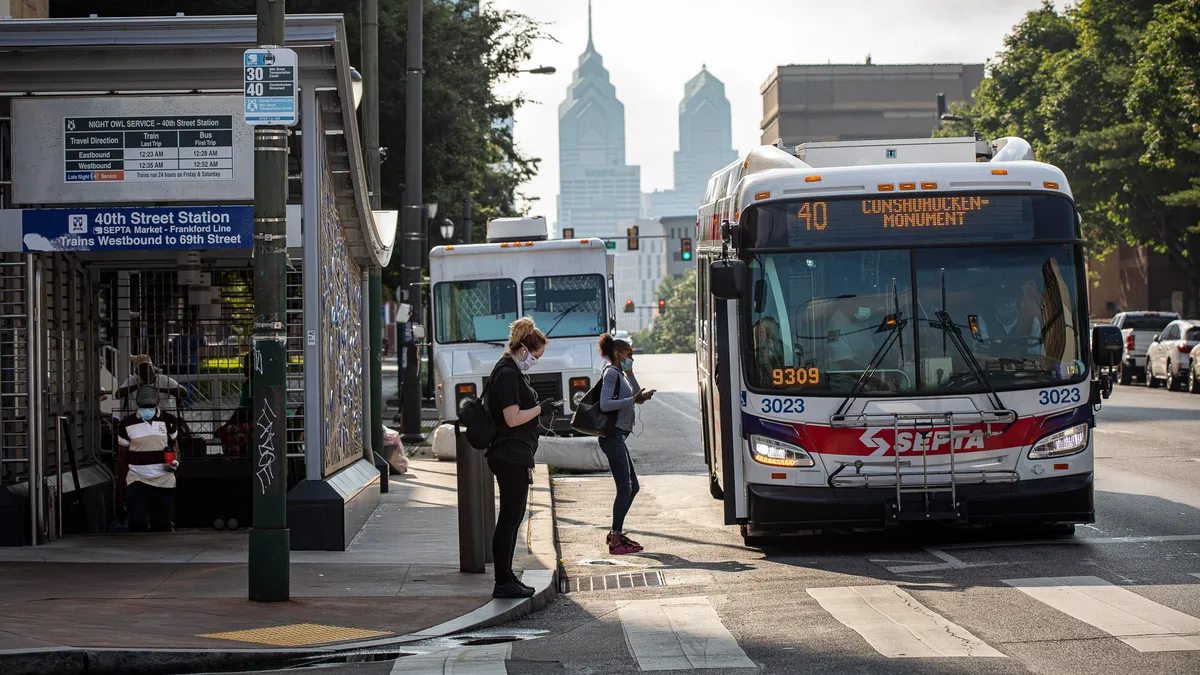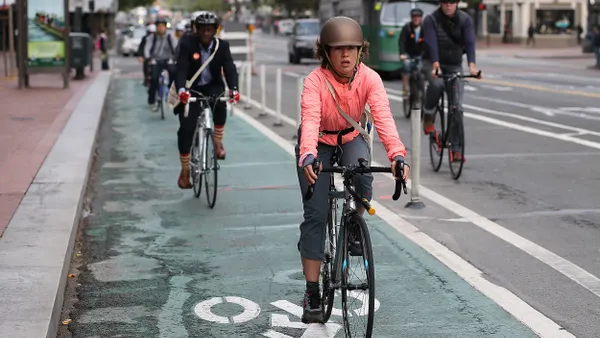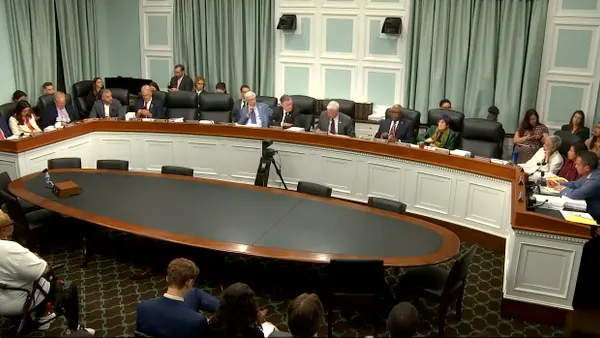Center City has long been the bustling heart of Philadelphia, welcoming nearly 300,000 commuters daily to drive the city's economic engine. But as the COVID-19 pandemic forces workers to stay remote, leaders are tapping artificial intelligence (AI) to better assess teleworking's long-term impacts on the region's transit — and on Center City's future.
Students from Penn State University's Nittany AI Alliance, in partnership with the City of Philadelphia, the Southeastern Pennsylvania Transportation Authority (SEPTA) and Accenture, have developed an AI-driven algorithm to illustrate the "teleworking risk" of census tracts across the Philadelphia region. The algorithm uses American Community Survey data and historical ridership data from SEPTA to indicate the percentage of jobs that can be done by telework in each tract, then displays those percentages in a heat map.
In the SEPTA Future Telework Forecasting Tool, which hosts the map, users can select from a list of bus, train and regional rail routes to overlay on the map, or click on a specific census tract to gain more information on its bus routes and details on its teleworking risk. The red tracts indicate a higher "risk," or likelihood of residents to telework.
"We’re realizing that a lot more jobs can be done from home now and we rely a lot on people commuting in and out of the city," said Emily Yates, smart city director for the City of Philadelphia. "So if jobs are going to transition to teleworking more permanently, what does that mean for our service and how we can provide it?"
That's the question Joel Seidel, a Penn State senior and Nittany AI Associate, hopes the city and SEPTA can begin answering with the help of the forecasting tool. And, if found to be useful, "the algorithm and the model that we created could very easily be taken by another team somewhere else and applied to a different metro area," Seidel said.
Partnering with the public sphere
When Seidel began his work as an AI Associate in late 2019, he and a fellow student teamed with Accenture consultant Kevin Brown to identify a public sector challenge that could benefit from an AI framework. They pitched a collaboration to Yates, who was "elated" by the opportunity to build out the city's relationship with the university. Then COVID-19 hit.
The city was quickly buried in crisis response, so Yates passed the opportunity to SEPTA in a bid to help the agency better understand the impact of COVID-19 on its ridership. The group then finalized its focus on telework — a trend already gaining popularity pre-COVID.
"There was an opportunity to still use these AI and data tools to help the city in this crunch time, this new paradigm," Brown said. "It was very natural in a way, and also very timely."
Though the intention of the project was never to offer direct recommendations in how SEPTA can mitigate ridership changes amid COVID-19, providing an analytical framework of the situation can help the agency "make some data-driven decisions about how to allocate their resources during this very transformative and confusing and evolving time," Brown said.
The team's framework and associated heat map illustrates a key teleworking trend: "The more affluent the area, the higher the teleworking," Seidel said. This finding was also identified in a recent University of Chicago paper that looked at the correlation between the occupations held in a certain metro region and the ability to work remotely within those occupations.
By understanding transit accessibility and remote work flexibility in each of the region's census tracts, SEPTA can better assess ridership demands by neighborhood and reallocate services accordingly.
“We live in a world of limited resources, so given the constraints of capital, we have to best allocate it to make sure people who need transit are able to access and use transit," Brown said.
Benefits beyond transit
The framework could also have indirect benefits on the city, Yates said, enabling departments to inform revenue predictions or neighborhood improvement plans.
"For me, it’s about getting more data to create robust datasets. The more data we can have in our decision-making, the more effective decisions we can make," Yates said.
And while her work in utilizing the framework for potential citywide improvements is just beginning, Yates touted the inherent benefits of entering partnerships to advance smart city work. "It really is how we elevate innovation in the city and we were thrilled to be a part of it," she said.
As for Seidel, the experience working with SEPTA and the City of Philadelphia has "expanded my horizon from simply software development" to possible public sector work in the future, he said. "I’m excited to know that next time I go down to Philadelphia and I take the train somewhere, I may have had a part in improving that service."











